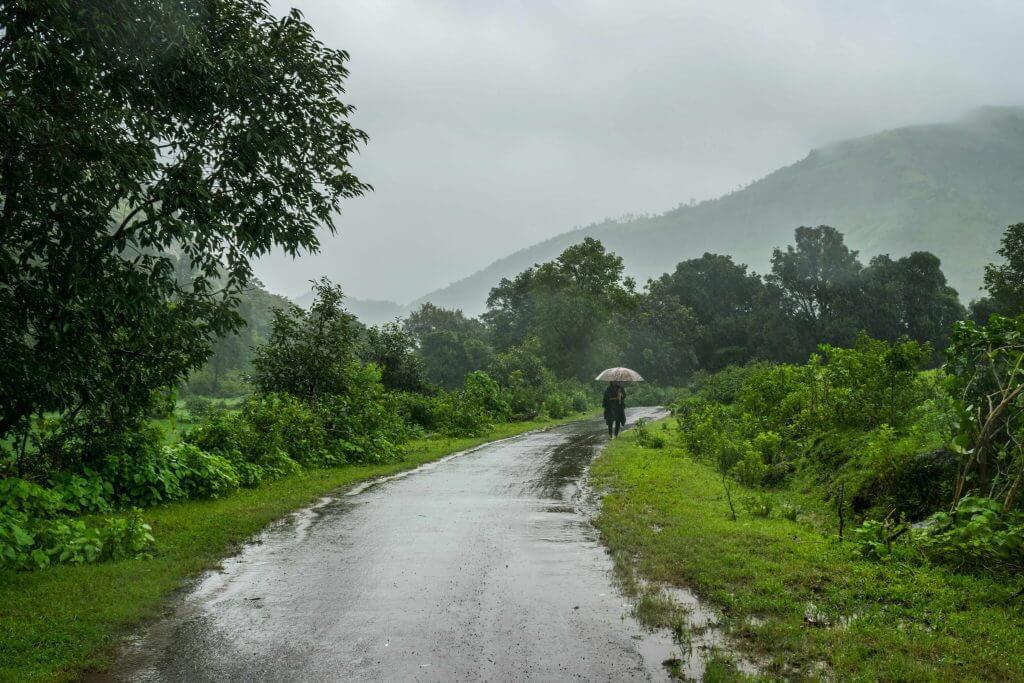Mawsynram is famous for holding the title of the wettest place on Earth. With an average annual rainfall of over 467 inches, this charming village offers a unique blend of natural beauty, rich culture, and a stunning landscape that attracts visitors from around the globe. Known for its lush greenery, breathtaking waterfalls, and diverse flora and fauna, Mawsynram is a must-visit destination for nature enthusiasts and adventure seekers alike.
The Climate and Rainfall
Mawsynram’s extraordinary climate is largely attributed to its geographical location. Situated on the windward side of the Khasi Hills, the village is subjected to heavy rainfall during the monsoon months, typically from June to September. The moisture-laden winds from the Bay of Bengal collide with the hills, resulting in continuous and torrential downpours. This phenomenon creates a mesmerizing environment characterized by cascading waterfalls, vibrant flora, and rich biodiversity.
Despite the heavy rains, Mawsynram also experiences a mild climate during the winter months, with temperatures ranging from 10°C to 20°C (50°F to 68°F). The village’s scenic beauty is particularly captivating during this time, as the clouds break, revealing stunning views of the surrounding hills and valleys.
Natural Wonders
One of the main attractions of Mawsynram Meghalaya is its stunning natural scenery. The lush green landscapes are adorned with a plethora of waterfalls, including the famous Nohkalikai Falls and the Seven Sisters Falls, both of which are located a short distance from Mawsynram. These waterfalls are not only a sight to behold but also provide opportunities for adventure activities like trekking and photography.
The unique geography of Mawsynram also supports a diverse range of plant and animal life. The region is home to several endemic species, making it a hotspot for biodiversity. Birdwatchers will be delighted by the variety of avian species found here, including the vibrant Scarlet Minivet and the striking Blue Whistling Thrush.
Cultural Richness
Mawsynram is not just about natural beauty; it also boasts a rich cultural heritage. The village is predominantly inhabited by the Khasi tribe, known for their matrilineal society and vibrant traditions. Visitors to Mawsynram can experience the local culture through traditional festivals, music, and dance.
One of the key festivals celebrated by the Khasi people is the Shad Suk Mynsiem, a harvest festival that showcases traditional dance forms, music, and the community’s deep connection to nature. The festival attracts tourists and locals alike, offering a glimpse into the vibrant life of the Khasi people.
The local cuisine is another highlight of Mawsynram. Visitors can savor traditional Khasi dishes, which often feature rice, meat, and a variety of locally sourced vegetables and herbs. Dishes like Jadob (a local fish preparation) and Pukhlein (rice dumplings) provide a delicious insight into the culinary heritage of the region.
Adventure Activities
For those seeking adventure, Mawsynram offers a plethora of activities to indulge in. Trekking is one of the most popular pursuits, with numerous trails leading through the lush forests and hills. The treks vary in difficulty, making them suitable for both novice and experienced hikers. The trails often lead to breathtaking viewpoints, where hikers can soak in the serene landscapes and capture stunning photographs.
Caving is another exciting activity in Mawsynram. The region is dotted with numerous limestone caves, including the famous Siju Caves and the Mawsmai Caves, which offer an exhilarating experience for spelunkers. Exploring these caves allows visitors to witness impressive stalactite and stalagmite formations while learning about the region’s geological history.
Visiting the Living Root Bridges
One of the most unique aspects of Meghalaya is its living root bridges, and Mawsynram is no exception. These incredible structures are made from the roots of the Ficus elastica tree, which are guided and trained to grow into a bridge over time. The most famous living root bridge in the region is the Nongriat Root Bridge, located a short trek away from Mawsynram.
Walking across these bridges is not only an adventure but also an opportunity to connect with nature and witness the ingenuity of the local Khasi people. The bridges blend seamlessly into the environment, showcasing the harmonious relationship between humans and nature.
Practical Information for Travelers
For those planning a visit to Mawsynram, there are a few practical considerations to keep in mind:
- Getting There: Mawsynram is approximately 60 kilometers from Shillong, the capital of Meghalaya. The nearest airport is Shillong Airport (Umroi), which is well-connected to major cities in India. From Shillong, travelers can hire taxis or take local buses to reach Mawsynram.
- Best Time to Visit: While Mawsynram is captivating year-round, the best time to visit is during the winter months from October to February when the weather is pleasant and ideal for outdoor activities.
- Accommodations: There are several guesthouses and homestays in and around Mawsynram, offering comfortable accommodations for travelers. Staying in a local homestay can enhance the experience, providing insight into the local culture and cuisine.
- Pack Accordingly: Given the heavy rainfall, visitors should pack waterproof clothing and sturdy footwear. It’s also advisable to carry an umbrella or raincoat, especially during the monsoon season.
Conclusion
Mawsynram is a hidden gem that offers a unique combination of breathtaking natural beauty, rich culture, and adventure. As the wettest place on Earth, it invites travelers to explore its lush landscapes, experience the vibrant traditions of the Khasi people, and engage in thrilling outdoor activities. Whether you’re trekking through its verdant hills, savoring local delicacies, or marveling at the living root bridges, Mawsynram promises an unforgettable journey into one of India’s most enchanting regions. Embrace the magic of Mawsynram and discover why it is a must-visit destination for nature lovers and adventurers alike.





Comments